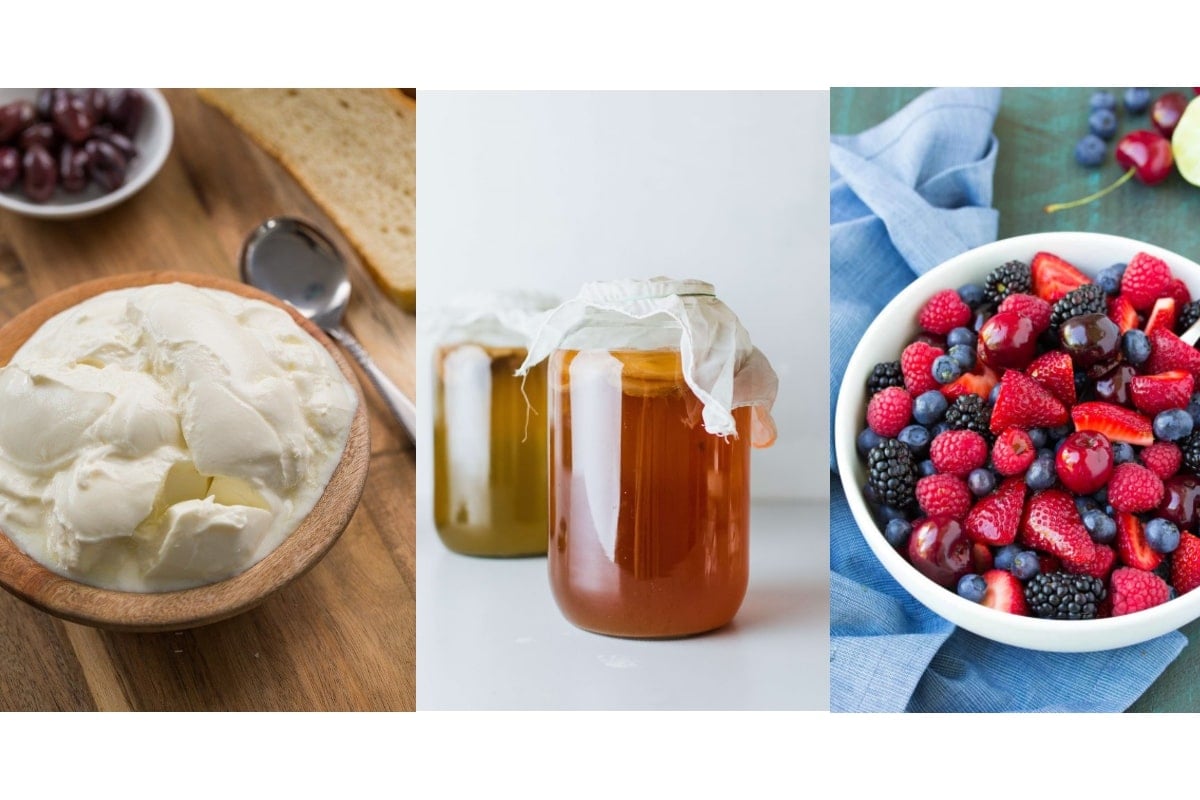
Now more than ever, the overall health and wellbeing of our bodies is firmly at the front of our minds. Nourishing ourselves from the inside to feel at our most rigorous and vibrant throughout the day. A key part of maintaining overall health is ensuring we consume a balanced diet – and this is more than ensuring you reach your two and five fruit and veg every day. Breaking it down to a micro level, there’s a wealth of vitamins and minerals o be consumed. One key component of this are probiotics and prebiotics. So, just what is the difference between the two and how can they be included in a balanced diet? Our comprehensive probiotics vs prebiotics guide is here to assist.
What are probiotics and prebiotics?
Prebiotics and probiotics are both important for overall human health, yet have different roles to play. These differences include:
- Probiotics: Live bacteria found in certain foods and supplements, providing abundant health benefits
- Prebiotics: Substances attained from carbohydrates (mainly fibre) which humans can’t digest. The ‘good’ bacteria in our gut eat the fibre.
Our gut bacteria, known as the gut flora or gut microbiota, performs multiple functions in the body, like promoting overall health and wellbeing. Thus, it is imperative to consume balanced amounts of probiotics and prebiotics to ensure bacteria is balanced and your microbiota is happy.
Why is gut bacteria beneficial?
Gut bacteria in the digestive tract play a role in protecting the body from potentially harmful bacteria and fungi. A 2013 study confirmed the wide variety of good bacteria can aid in immune function and address obesity concerns, among wider benefits. Alongside this, some gut bacteria works to form vitamin K and short-chain fatty acids, the main nutrient source of cells lining the colon. These promote strong gut barrier, helping keep harmful viruses and bacteria at bay.
Which foods are classed as prebiotic?
Many foods naturally contain prebiotics in their makeup, due to the fibre found in vegetables, fruits and legumes. While humans are unable to digest this type of fibre, our good gut bacteria can.
Foods high in prebiotic content include:
- Oats
- Bananas
- Berries
- Jerusalem artichokes
- Legumes, beans and peas
- Garlic
- Leeks
- Onions
As mentioned earlier, prebiotic fibre can convert into short-chain fatty acids, named butyrate. It has previously been suggested butyrate production in the colon cannot be maintained without a regular, adequate consumption of prebiotic fibre, further reinforcing the importance of consuming it.
Which foods are classed as probiotic?
Probiotic foods primarily consist of fermented foods as they contain beneficial bacteria thriving on naturally occurring sugar or fibre in food. Plain yoghurt with live cultures is a simple inclusion in your diet if you are looking to add beneficial bacteria to your system.
However, there are more foods to consume other than yoghurt, including:
- Kombucha tea
- Kefir
- Unpasteurised pickled vegetables
- Sauerkraut
- Kimchi
Pasteurisation kills bacteria, so when consuming fermented foods for the purpose of attaining their probiotic value, ensure you are selecting an unpasteurised variety.
How does food affect our gut microbiota?
With this knowledge in mind, its important to understand how food impacts the microbiota in a more general sense. Our diet is integral in ensuring we maintain a balance of good and bad gut bacteria.
If you consume a diet high in sugar and fat, this negatively influences gut bacteria as it can contribute to insulin resistance. Once the bad bacteria are fed regularly, this allows them to develop faster without as much good bacteria to prevent them from colonising.
If you are concerned with your overall health and whether you are consuming an adequate amount of probiotics vs prebiotics, it is best to speak with your GP or health professional in the first instance.
Image: Pinterest



